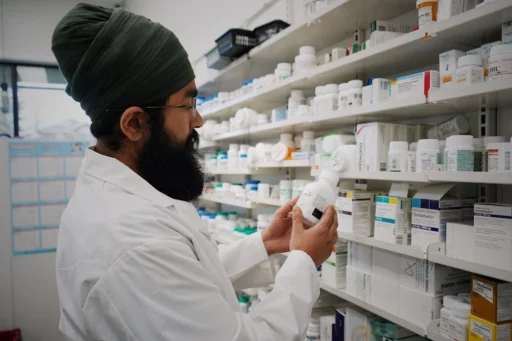Understanding the role and capabilities of urgent care centers is crucial for effectively navigating the healthcare system in Canada.
Urgent care centers provide a vital middle ground between primary care physicians and hospital emergency departments. They offer timely medical attention for non-life-threatening conditions that need immediate care but are not severe enough for emergency room intervention.
Table of Contents:
- What is urgent care?
- When should I go to an urgent care centre?
- When should I go to the emergency department?
- What is the difference between emergency room and urgent care?
- Can urgent care perform X-rays?
What is urgent care?
Urgent care in Canada refers to a category of walk-in clinic designed to offer medical attention for conditions that are not life-threatening but still require timely treatment. These facilities bridge the gap between primary care doctors, who may not have immediate appointments, and emergency departments, which are intended for more serious health crises.
Urgent care centers typically manage a range of acute conditions such as minor cuts requiring stitches, mild respiratory complaints, moderate back pain, minor fractures, and infections. They provide a convenient option for patients who need medical attention for ailments that, while not severe enough to necessitate emergency room care, cannot wait for a scheduled appointment with a primary care physician.
Operating hours for urgent care centers can extend beyond normal business hours, offering services in the evenings and on weekends to accommodate patients who require care outside of typical healthcare facility operating times. Staff at these centers usually includes a mix of physicians, nurse practitioners, and physician assistants, who are equipped to perform a variety of procedures and tests, ranging from blood work to X-rays.
The objective of urgent care is to deliver accessible, efficient medical care to alleviate immediate health concerns and to reduce the strain on emergency departments by diverting non-emergency cases. This not only ensures that patients receive the right level of care at the right time but also helps to optimize the allocation of healthcare resources within the community.
When should I go to an urgent care centre?
Visit an urgent care centre for treatment of the following conditions:
- 🤢 Nausea, vomiting, and influenza-like symptoms
- 🤒 Respiratory infections, such as coughs, colds, and fevers
- 🤧 Issues pertaining to the ear, nose, throat, and eyes
- 🩹 Minor lacerations that may require sutures
- 🏋️♂️ Sprains, strains, or injuries related to sports
- 🌸 Minor exacerbations of asthma or allergic reactions
These conditions, while not life-threatening, require timely medical attention that can be effectively managed in an urgent care centre.
When should I go to the emergency department?
Dial 9-1-1 for life-threatening, time-critical emergencies.
Do not drive yourself to the Emergency Department if you are having difficulty breathing, shortness of breath, a life or limb injury, or signs of stroke or heart attack.
Seek treatment at an Emergency Department for the following conditions:
- 😮💨 Respiratory distress
- 🩸 Uncontrollable bleeding
- 🫀 Chest pain or pressure
- 🦴 Fractures
- 🤕 Head trauma or injury
- 🔪 Deep lacerations or wounds
- 🔥 Severe burns
- 😖 Intense pain
- 🤢 Poisoning
- 😴 Unconsciousness or inability to awaken
- 🌀 Sudden onset of headaches, dizziness, weakness, numbness, visual or speech difficulties
- 👶 Acute illnesses or injuries in children and infants
- 🤰 Obstetrical emergencies, such as pregnancy complications, labor, and delivery
These conditions warrant immediate medical evaluation and treatment in an Emergency Department due to their potential severity and urgency.
What is the difference with emergency departments?
Emergency departments and urgent care centers in Canada serve distinct but complementary roles in the healthcare system.
🤒 Severity of Health Problems
Urgent Care Centres cater to less severe health issues that require prompt attention but are not life-threatening. These centres are ideal for treating conditions such as moderate fevers, minor fractures, sprains, cuts requiring stitches, and infections that do not pose an immediate threat to health. The urgency here is not of a critical nature, but rather the need for timely intervention which cannot await a regular doctor’s appointment.
Emergency Departments are equipped to handle severe and life-threatening conditions. They are the first line of response for acute health problems such as heart attacks, strokes, severe trauma, and other critical conditions that require immediate and intensive treatment. The capability of emergency departments to provide rapid medical intervention is crucial for conditions that could rapidly deteriorate and pose a significant threat to life or long-term health.
🕒 Operating Hours
Urgent Care Centres generally operate on extended hours, which may include evenings and weekends. However, they are not typically open 24 hours a day.
Emergency Departments operate 24 hours a day, 365 days a year.
👨⚕️ Staffing Levels and Types
Urgent Care Centres are staffed primarily by family medicine physicians who may have additional training in emergency care, supported by nurses and other healthcare professionals. These centres may also include support from specialists such as radiologists and pharmacists on an as-needed basis. The staffing levels are calibrated to manage the typical volume of patients seeking prompt treatment for conditions that do not require the extensive resources of a hospital emergency department.
Emergency Departments are equipped with a broader and more specialized range of medical staff due to the complexity and severity of conditions they handle. This includes emergency medicine specialists, surgeons, anesthesiologists, nurses trained in critical care, and other specialized healthcare providers. Emergency departments are staffed more heavily and around the clock to ensure immediate response to any critical condition that may arise.
🩺 Facilities and Equipment
Urgent Care Centres are facilities that handle non-life-threatening conditions which require prompt attention but do not rise to the level of an emergency. Typically, these centres are equipped to manage ailments such as minor cuts, burns, sprains, or mild infections. The equipment in urgent care centres usually includes basic diagnostic tools like X-ray machines and standard medical tools for minor procedures. These centres are not equipped for complex diagnostics or surgeries.
Emergency Departments are located in hospitals and are equipped to handle severe and life-threatening conditions. This includes heart attacks, strokes, severe trauma, and other critical conditions. Emergency departments are equipped with a wide array of sophisticated medical technology, including advanced imaging equipment like CT scanners and MRI machines, as well as the facilities necessary for emergency surgery and intensive care.
⏱️ Wait Times
Urgent Care Centres typically feature shorter wait times compared to emergency departments. These facilities are designed to efficiently handle non-life-threatening conditions that require timely medical attention but do not necessitate the comprehensive resources of a hospital. By focusing on less severe ailments, urgent care centres can often provide quicker access to care.
Emergency Departments deal with a broader spectrum of health issues, including life-threatening and severe conditions. Given their critical role, priority is given to the most severe cases, which can result in longer wait times for patients with less urgent conditions.
Can urgent care centres do X-ray?
Urgent care centers in Canada are equipped to handle a variety of medical situations that require prompt attention, and many of these facilities have the capability to perform diagnostic imaging, including X-rays. X-ray services at urgent care centers are commonly used to assess and diagnose conditions such as bone fractures, chest infections, and other abnormalities that require immediate visualization but are not severe enough to necessitate a visit to an emergency department.
The availability of X-ray technology in urgent care settings allows for a more efficient diagnostic process, enabling healthcare providers to quickly determine the appropriate treatment for patients with injuries or conditions amenable to radiographic evaluation. This capability significantly enhances the scope of services that urgent care centers can offer, bridging the gap between primary care and hospital-based emergency care.
However, the availability of X-ray services can vary depending on the specific urgent care center, its location, and the healthcare policies governing the region. Patients are advised to verify the availability of such services with their local urgent care facility if they anticipate needing diagnostic imaging.







